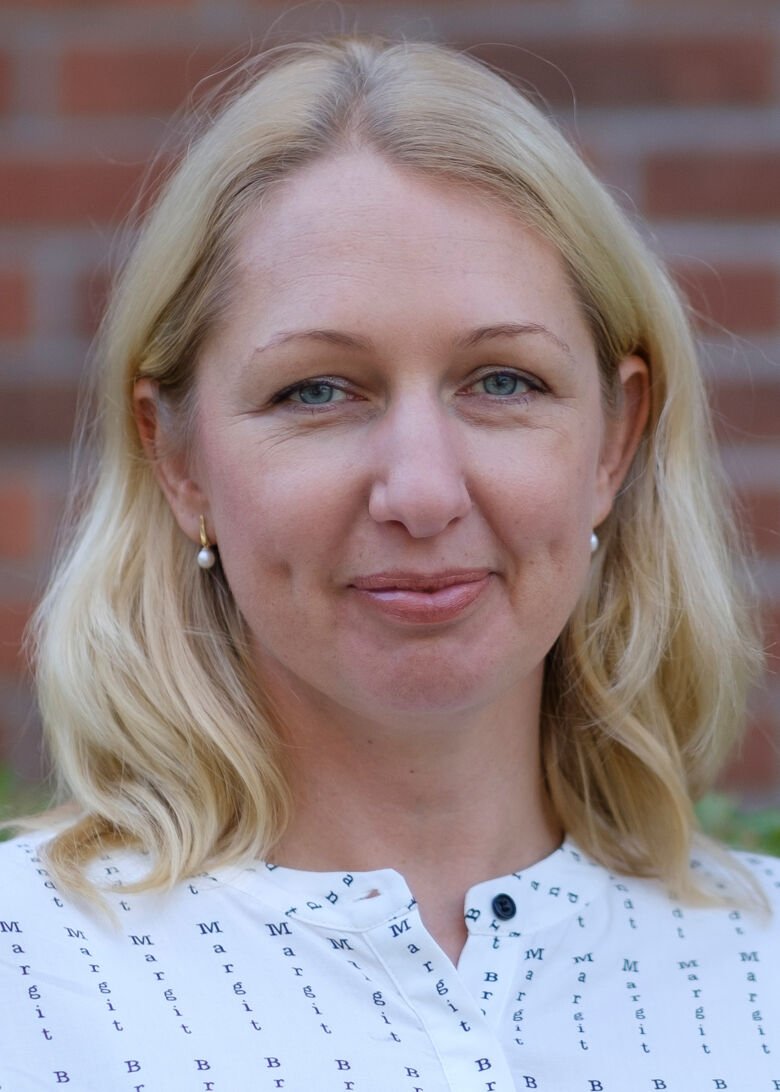Curious about longevity
Medical advances have contributed to an increase in life expectancy. Scientists are now trying to slow down ageing itself. But how long do we want to live?

Text: Ola Danielsson, first published in Medicinsk Vetenskap nr 4/2019.
“100 feels like a fairly acceptable age,” says Karin Modig, Associate Professor of Epidemiology at the Institute of Environmental Medicine, Karolinska Institutet, who has spent more time than most thinking about how long life lasts.
She does, however, want to see a population with a high average life expectancy – a high average life expectancy means that people are generally healthy. It is therefore positive that the average life expectancy in Sweden is on the rise, as well as in most of the world.
Over the past 250 years, the average life expectancy in Sweden has gone from 40 to 80 years. The chance of Swedes living to see their 100th birthday has been multiplied (see graphics below).

But it also easy to misunderstand what kind of medical advancements we are talking about. The average life expectancy does not rise because humanity as a species has managed to extend its lifespan. It increases because more individuals live to older ages.
“Some think that no one reached old age in the past, but that is not the case,” says Karin Modig.
Average life expectancy is also not the same as most people dying at a certain age. In other words, it is not a prognosis for how long anyone can expect to live, Karin Modig explains.
But improvements made in public health at all stages of life do have a clear impact on the average life expectancy. A prerequisite for living a long life is not to die prematurely, a fate which befalls fewer and fewer people - child mortality has decreased by almost 75 per cent worldwide since 1950.
“Getting certain infectious diseases under control and bringing down child mortality rates has had a major impact on the average life expectancy,” says Karin Modig.
Sustainable Development Goals
According to the UN’s Sustainable Development Goals, the proportion of child fatalities that can be prevented shall be brought down to zero by 2030. There are great inequalities in the world and many countries have a long way to go. But according to Karin Modig, Sweden has more or less already achieved this goal.
“In Sweden, we cannot really go much further when it comes to affecting average life expectancy by reducing mortality among the young. There will always be some who die, but to the extent that mortality among the young impacts on the average life expectancy, we have prevented this as far as can be achieved,” she says.
The average life expectancy in Sweden has still continued to rise. This is due to a reduction in the risk of dying at older ages in the last 20 years. Karin Modig highlights how fewer people succumb to cardiovascular disease, but also that the risk of dying due to illness has dropped in general. However, the risk of being diagnosed with cancer has not gone down. In fact, some forms of cancer have become more common. But the odds of surviving cancer have improved significantly, according to Karin Modig.
“On the whole, we have improved our lifestyle. We smoke less, eat more fruit and vegetables, fewer people have jobs that strain the body, and we move around more. We also now have the chance to treat incipient diseases early with, for example, medications to lower blood pressure and cholesterol,” says Karin Modig.
Age-related diseases have also been postponed to later years.
“A 65-year-old today is not comparable to a 65-year-old 30 years ago. We are much more energetic and healthier today,” says Karin Modig.
The standard health advice regarding diet, physical activity and social interaction increases the chances of living a long life. But for those wishing to grow really old, there is no guidance to be found in the research. The super elderly above the age of 110 have proven to be a motley crew.
“One has been a vegetarian their whole life, another has eaten nothing but meat. One has never been to the doctor, while another has had many illnesses. It is very difficult to find any common denominators. Both genetics and chance probably play a major part,” says Karin Modig.
The limit could be reached
According to Karin Modig, the rise in average life expectancy in Sweden is about to slow down. In order for an increase of a similar scale to occur, the risk of dying would need to be reduced even higher up in years, among people who are 95 or older. There have been little to no improvements made in this area over the past decades. It is also one area where Sweden is falling behind.
“We are part of the top ten in the world when it comes to average life expectancy, but among these countries, Sweden has the highest mortality rate among the elderly. This is strange, seeing as we often claim to have the best healthcare in the world. I would really like to know why that is,” says Karin Modig, who intends to pursue this issue further in her research.
After 100, it is unclear what can be accomplished.
“Perhaps we will be able to reduce the mortality risks after 100 so as to make death an even more distant prospect. Or we could be approaching the limit for how old humans can become,” says Karin Modig.
The official world record for old age is held by Jeanne Calment, who died on 4 August 1997 at age 122. Since then, no one has even come close to reaching that age.
According to Karin Modig’s research, age-related records are becoming increasingly rare in Sweden as well. The oldest women live to around 110 and the oldest men to 108.
“Going back around ten years, we see no increase whatsoever regarding the maximum age. This contradicts the notion that the maximum lifespan keeps getting longer,” says Karin Modig.
If we require more proof that life is finite, a group of researchers wrote an article in the journal Nature in 2016 claiming that they could prove just that. According to their calculations, measures aimed to improve one’s health become less effective after a person turns 100, which was interpreted as there being a finite limit to how old humans can become. You could say that after 100, it is all downhill.
Life becomes increasingly dangerous
According to Karin Modig, it should come as no surprise that life becomes increasingly dangerous. According to her calculations, the risk of dying increases by 11 per cent for every year we live – a figure which is surprisingly consistent.
“It does not matter who you are, we have tested it. Even if you are, say, an athlete with an extremely healthy lifestyle, your relative risk of dying increases at the same rate as everyone else’s,” says Karin Modig.
This does not however mean that everyone is at the same level of risk — for example, it is more dangerous to be sick than healthy. But diseases do not cause the risk linked to ageing to increase at a faster rate.
“Succumbing to a disease such as diabetes means that the risk goes up temporarily, making the individual jump up to a higher level of risk. But after a while, the risk caused by age increases at the same rate as for everyone else.”
According to Karin Modig, this simply reflects the fact that we age — and ageing seems to tick along at the same rate regardless of what happens to us. When we reach 100 years old, the risk of us dying is around 50 per cent per year.
There is a possibility, however, that this ceases when we reach 110. At least, that was the thesis of the researchers who wrote a article about the finiteness of life, which was published in the journal Science. According to them, they had discovered that the risk of dying stops increasing at 110 years old, which would indicate that there is no upper limit to the human lifespan.
You could also say that it is no longer downhill after 110, but rather that things even out. But in order for someone to live for several years beyond 110, you still need quite a few 110-year-olds. That is, if the researchers turn out to be right.
No, for humans to be gifted with longer lives, something else is required.
“If we could slow down the actual ageing process, we could raise both the average life expectancy and the maximum lifespan. It will be interesting to see if that ever happens,” says Karin Modig.
Trying to slow down aging
Christian Riedel, researcher at the Department of Biosciences and Nutrition, Karolinska Institutet, is working on that very task. He is trying to understand how the rate of ageing is regulated on a molecular level and is attempting to identify substances that may cause the ageing process to slow down.

“Most of the major endemic diseases, such as diabetes, dementia and to some extent cancer, are age-related. They become more common when we grow older. If we can slow down the ageing process, it would also mean that we lower the risk of people being afflicted by these diseases,” he says.
According to him, ageing is caused by the body being subjected to different kinds of stress that harms cells in the body, which eventually causes the body’s functionality to deteriorate, making it more vulnerable to disease.
According to some researchers, it is only a matter of time before we solve the problems of ageing. Christian Riedel is sceptical of how this could be accomplished, however.
“I would be very surprised if we find a way to prevent or repair all the consequences of the ageing process,” he says.
That said, he views significantly slowing down the ageing process as a more realistic goal. He believes that the body is already equipped with the mechanisms that could be used for this purpose.
“We know of certain signalling pathways that have a substantial effect on the body’s ability to repair itself and protect against damage. One such example is insulin-like growth factor, IGF, signalling which is affected by the availability of nutrients,” says Christian Riedel.
Certain types of nutritional deficiency, but also genetic mutations, can reduce the level of activity in this signalling pathway, which leads to an increased lifespan in animal test subjects. For us humans, periodic fasting could achieve a similar effect. Out of curiosity, Christian Riedel has tried this method himself, which resulted in him losing weight and feeling healthier. Though he was not particularly diligent.
“I felt that this might work, but in order to observe the long-term benefits, you would need to be more disciplined and fast for a longer period of time,” he says.
Counteract ageing
The mechanisms to counteract ageing are probably not designed to give us long lives. Their evolutionary function has been to keep us healthy and to protect us during difficult times so that we may stay alive for long enough to have children. Once this has been accomplished, the decline is pronounced.
“We hope to be able to discover some way of activating these defence mechanisms using medication, particularly also later in life when we have become adults,” says Christian Riedel.
In a recently published study, he and his colleagues used information about the contents of RNA molecules, the transcriptome, in tissue samples from more than 8,000 individuals of different ages. Computers equipped with artificial intelligence then processed the information, eventually learning to determine whether a given transcriptome came from a young or old person.
Among approximately 1,000 substances, the researchers identified two substances capable of changing the transcriptome of human cells in a manner which, according to the AI-based programme, caused their identity to go from “old” to “young”.
Determining whether these substances actually affect how humans age is still a distant prospect. But it worked for worms at the very least. Worms exposed to the substances increased their lifespan by 20 per cent.
For Christian Riedel, the study provided important evidence that the method works, and he now plans to use it to identify new substances that can slow down the ageing process at a cellular level.
The same substances also caused the worms to become more active and stress-resistant. To Christian Riedel, it was encouraging to see life being prolonged, with health seemingly improving at the same time.
Healthspan is what matters most
“A longer life is not the only desirable outcome. Our primary goal is to extend the period during which we are healthy, what us researchers call the healthspan. This is where ageing-related research should be focused,” he says.
If research also leads to an extended lifespan, that is something positive, but it is not a requirement according to him.
“If that happens, it´s great. But it is even more important that people get to stay healthy.”
In the last couple of years, researchers have learned to extend the lifespan of a number of animal species. The lifespan for the C. elegans, the type of worm used by Christian Riedel, can be tripled with the use of simple methods, and the current record is a lifespan that was almost extended tenfold.
From a human perspective, an extension of that scale would be extraordinary. But humans may want to dial back their expectations, says Christian Riedel.
It is more difficult to extend the lifespan of more complex organisms. No one has been able to double the lifespan of a mouse. The end result for humans may be smaller still. There is thus far no substance or other intervention with a clearly proven ability to slow down the ageing process.
But Christian Riedel believes that such interventions will be developed, but they will just be less powerful compared to what is possible with simpler organisms.
“I believe that it is realistic for us to be able to extend our lifespan by 10-20 per cent using substances that slow down the ageing process.
For his part, he would not be opposed to living a few hundred years.
“Yeah, why not. I would be curious to try it. There is of course a risk that life would grow boring in the long run. But I would be optimistic to always find new things to keep me excited and going.”
Three animals with interesting lifespans
Hydra — eternal life
A genus of the phylum Cnidaria that does not seem to age whatsoever. Researchers have calculated that if a group of hydra were allowed to live in a safe laboratory environment, five per cent of them would still be alive after 1,400 years.
Worms — super short life
The worm dubbed C. elegans only lives for 2-3 weeks, making them popular among researchers wishing to study lifespan.
Desert tortoise — safe life
This tortoise is native to the deserts of the southern United States and northern Mexico, and for reasons unknown, it has a diminishing mortality. The older it gets, the less likely it is to die.
Source: Diversity of ageing across the tree of life, Nature januari 2014
 Photo: Getty Images
Photo: Getty ImagesHow old are you – really?
You might be 50 years old, but your body could be as fresh as a 40-year-old’s ‒ or vice versa. Biological ageing has its own pace and rhythm. How we live our lives, what we experience, and the quality of medical treatment we receive all influence how quickly we wear out.
 Photo: Gettyimages,Getty Images/iStockphoto
Photo: Gettyimages,Getty Images/iStockphotoCentenarian blood tests give hints of the secrets to longevity
Centenarians, once considered rare, have become more common, and the pursuit of understanding the secrets behind exceptional longevity isn’t easy. However, a recent study published in GeroScience by associate professor Karin Modig has unveiled some common biomarkers in people who live past 90.
